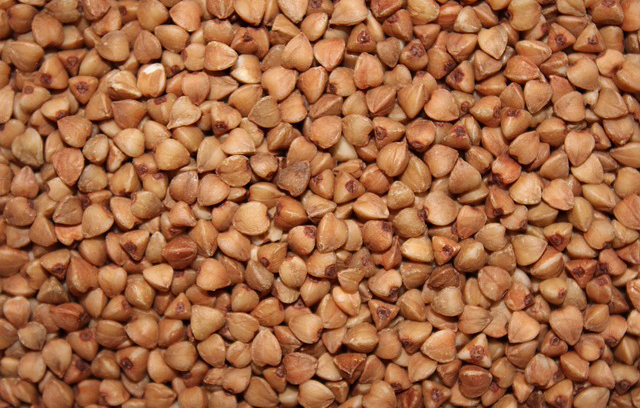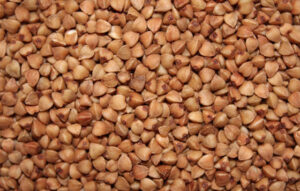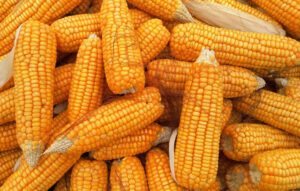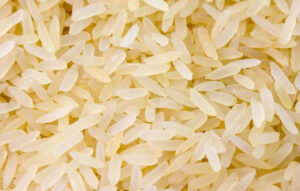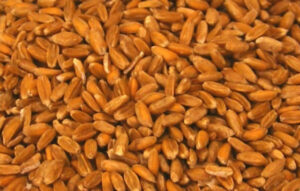GrainProTrade – Wholesale buckwheat at producer prices
Our company GrainProTrade supplies buckwheat directly from farmers in Ukraine and Kazakhstan on favorable terms. Our buckwheat has a purity of 98% and a moisture content of no more than 14%.
You can safely buy buckwheat from us without worrying about the quality, because all our products are consciously selected by our QM employees in Ukraine and Kazakhstan and thus meet the highest standards, which guarantees the expected quality of the goods. Besides the high standard, the products are sold at an affordable wholesale price. Terms of sale of buckwheat can be specified at any time in writing or by phone with the manager. Our team provides our customers with the in Big Bag Packed ordered buckwheat by truck within 5 working days.
Current prices for buckwheat:
- buckwheat for FCA-Price from €930/ton plus freight costs.
The main advantages of the ZusaWorking with our company:
- the high level of professionalism of our entire team, which ensures trouble-free delivery of quality buckwheat in the shortest possible time;
- an appropriate price level, since we deal directly with buckwheat producers in Ukraine, e.gusamen work;
- convenient delivery straight to you.
Contact our managers on the website or by phone. We offer high quality buckwheat at an optimal price!

Buckwheat

buckwheat field

Buckwheat

Green buckwheat

Boiled buckwheat
All about buckwheat
Buckwheat contains easily digestible proteins - 9,5-14,1%, starch - 80,5-84%, fat - 1,8-3,1%, fiber - 1,2-2,2%, organic acids (apple - and citric acid), mineral salts, B vitamins, iron, calcium, phosphorus.
Green buckwheat contains all 8 essential amino acids that are not synthesized in the human body and need to get into it with food. In 100 g of the product there are 180 mg of tryptophan, 630 - lysine, 260 - methionine, 590 - valine, 500 - threonine, 680 - leucine, 520 - isoleucine, 540 - phenylalanine, 300 - histidine. There are almost no simple carbohydrates in buckwheat, so it can be included in the diet of diabetics and those who are on a diet to lose weight. Since buckwheat is the fruit of a flower, and not a grain crop, gluten is absent, it is contraindicated in celiac disease. The complex carbohydrates contained in the product are digested slowly and provide a feeling of satiety.
There are almost no simple carbohydrates in buckwheat, so it can be included in the diet of diabetics and those who are on a diet to lose weight. Because buckwheat is the fruit of a flower and not a grain crop, it lacks gluten, which is contraindicated in celiac disease. The complex carbohydrates contained in the product are digested slowly and provide a feeling of satiety.
The product is recommended for pregnant and lactating mothers, children, the elderly, hypotensive, allergic, athletes and those engaged in heavy physical work. Thanks to a balanced and diverse range of vitamins and mineralsusaIn its composition, buckwheat improves the condition of the body in many diseases. It can increase the level of hemoglobin in the blood, cleanse the body of toxins and metabolic products, strengthen bones.
Buckwheat is an annual upright plant that is 70 centimeters high. Branching is another, less often opposite. In the branching phase, the green, ribbed stem gradually turns red, from its internodes emerge heart-shaped, triangular leaves on short stalks. The width and length of the leaves are approximately the same, their size and length of the petioles decrease upwards, the leaves become arrow-shaped.
In June-September, the plant enters a period of budding and flowering, when clump-shaped brushes with red or white flowers on long axillary peduncles appear from the axils of the leaves. The flowers are sexual with 8 stamens and 8 nectars giving off a strong honey aroma that attracts many pollinators. The pistil is triangular and three-columnar with a unilateral upper ovary. The flowers are corolla, five-part pale pink and red when the temperature drops.
Buckwheat fruit ripens in September-October. This is a triangular solitary nut with a rhombic or rounded shape, 5-7 millimeters in thickness and length. Some plants can form fruits with many faces - up to 12. Usually the faces are flat, smooth and convex. The color of fruits that ripen under normal conditions is brown, gray or purplish-black. If the seed was formed in an unfavorable environment, it will be red in color.
Buckwheat seeds have a fruit and seed coat. Below the seed is the endosperm, which accounts for up to 70% of the fetal weight. The germination of single-corn buckwheat forms a thin core root, from which the side roots then grow in several rows. The plant is capable of forming appendage roots on the stem and branches.
It is easy to get a bountiful harvest of buckwheat, for this it is enough to comply with the cultivation technology regarding the selection and preparation of the site, the period and methods of sowing, as well as methods of care. Following the recommendations of experienced farmers, you can achieve sustainable yields in any region.
The plant loves warmth. The seeds are picked at a soil temperature of about +8 °C, but the shoots will rise better when the environment has warmed up to +15… +30 °C. Frosts damage the shoots, and at -4 °C they die. During the flowering period, the plant is harmful to the air temperature above +30 °C - pollination worsens and the ovaries die. The optimal regime for flowering of buckwheat is +17… +25 °C. The root system absorbs even poorly soluble phosphates, so buckwheat receives 4 times more nutrients than other grain crops.
Fertile, light and breathable soil is suitable for growing buckwheat. If the plot is located near a forest or reservoir, then the number of ovaries will increase, and at the same time the harvest. The plant can grow on acidic soils, but the yield is higher on neutral and slightly acidic soils.
The peculiarities of growing buckwheat include a high need for moisture. The culture is among others in cereals leading according to this criterion. For safe growth of shoots there is little optimal temperature, you need soil moisture at 20-30%.
From the existing sowing plans, choose an option that the ZusaThe composition of the soil and the characteristics of the terrain are taken into account. On poor soil with a small number of weed plants, the distance between planting rows should be from 7 to 15 centimeters If the soil is densely populated with weeds, but a rich ZusaIf there is settlement, a distance of 45 centimeters is left between the rows of plants.
The plot reserved for growing buckwheat must be well prepared for planting. From autumn the soil is peeled for stubble and plowed with ploughs. If under the predecessor the plot is plowed deep, then for buckwheat it is enough to plow deep up to 20 centimeters.
In arid regions and in areas with erosive soils, a shallow cutting treatment is performed, leaving a stubble on the surface. Working in August gives the best results. In order for the soil to be saturated with moisture in winter, snow should be snowed twice.
For growing buckwheat in the garden, seeds about 4 millimeters in size are suitable. When planning to grow buckwheat, it is important to choose the right sowing time. The best time for planting is when the soil has warmed up to + 10 °C to a depth of about 12 centimeters. Methods of sowing: private and broad-feed. On an industrial scale, a grain seeder is used for the first method, and a beet is used for the second. The sowing rate is about 5 million grains per hectare.
At the stage of the appearance of the first leaf, the field is buried across the rows. For wider plants, use the cultivator, working the row spacing to a depth of 6 centimeters the first time, and then already in the budding phase to a depth of 8-10 centimeters. Heavily clogged fields are treated with herbicides.
The practical guide to growing buckwheat focuses especially on bee dust formation. Beehives are taken to the field a few days before flowering begins. 2 bee colonies are required per hectare.
When growing buckwheat, be sure to use fertilizers introduced during the growth period and during the flowering period of the culture. This allows you to increase the plant's proximity to the ground and thereby obtain higher yields, while at the same time achieving grain enlargement. For broad-eating plants, 25 kilograms of complex or nitrogen fertilizers are used per hectare. Before fertilizing, it is necessary to moisten the soil well.
The main fertilizing throughout the growing season is potassium. Especially when it comes to chlorine-free preparations. Slurry should not be used, since in the summer it quickly decomposes and releases a large amount of nitric acid. Such fertilizer will lead to an increase in greenery at the expense of yields.
If you are engaged in the cultivation of buckwheat, you should be prepared for the fact that this culture is characterized by an extended ripening period. Technical maturity of the crop occurs approximately 20-30 days after the start of flowering. Harvesting is scheduled for a time when about 70% of the plants will acquire a brown tint. There is no need to expect full maturation due to the unevenness of the process. It is advisable not to override the harvest in the field, since in this case part of the valuable grains will be lost.
After the harvest, it is the turn of the threshing to further clean, dry and sort the grain. After drying out the rollers and lowering the moisture of the stems and foliage to 35%, they start threshing. The speed of the drum is reduced to 600 rpm during threshing. The grain is fed into the stream where the first stage of purification takes place.
In the case of severe contamination, the grain is processed on pneumatic sorting tables. The grains obtained after processing are stored in bags and placed on wooden pallets in a ventilated, dry room.
Buckwheat grains get buckwheat groats, which are characterized by high taste and nutritional qualities. The ProteinzusaThe composition of buckwheat corresponds to the quality of the proteinusaComposition of legumes, contains essential acids lysine - 7,9% and arginine - 12,7%.
The chemical Zusacomposition of unbroken fruits: moisture – 12,8%, proteins – 10-16%, fats — 1,8-2,7%, azotic extractive substances — 60-62%, fiber — 13,3%, ash substances — 2,1, XNUMX%.
The ZusaComposition of buckwheat groats includes organic acids (citric, malic and oxalic), minerals (phosphorus, calcium, iron, copper), vitamins B1 (thiamine), P (rutin) and B2. The content of vitamins is 1,5 times higher than in wheat. Therefore, buckwheat is ranked as one of the best diet products.
Buckwheat flour is not suitable for baking, but it is used for baking pancakes, tortillas, etc., as well as in the confectionery industry. Waste after collapse of grain, straw and soil goes to animal feed, litter or organic fertilizer. 1 kilogram of buckwheat straw contains 23 grams of digestible protein and is equivalent to 0,3 units of feed, but its excess in the diet of animals is undesirable, as it can lead to diseases. The green mass obtained in crops is suitable for silos.
The ash of straw and buckwheat hulls contains up to 35-40% potassium oxide, so it can be used as a potassium fertilizer.
Buckwheat is a honey plant, the harvest of honey from 1 hectare of grain is up to 100 kilograms.
The leaves and flowers of buckwheat are used to make the drug rutin, which is used in the treatment of sclerosis, high blood pressure, and to eliminate radioactive nuclides from the body. The substance rutin is also present in the nucleus.
It serves as a good progenitor for many crops, also thanks to the rapid growth and good weed vegetation suppression.
Thanks to the short growing season and the ability to sow late, buckwheat can be used as a crop, cover and insurance crop. Harvest can be smelled on green manure.

